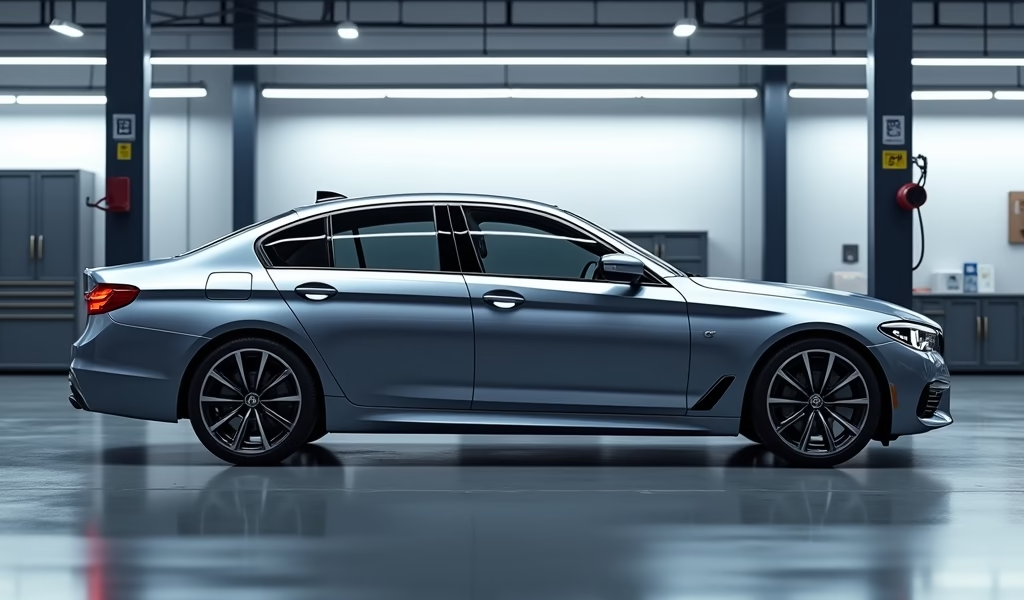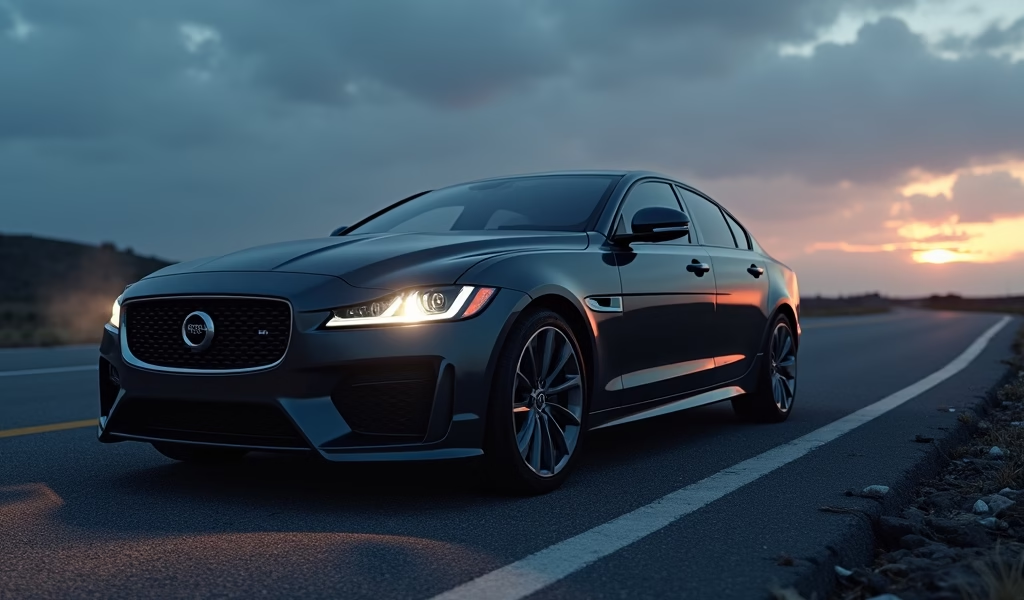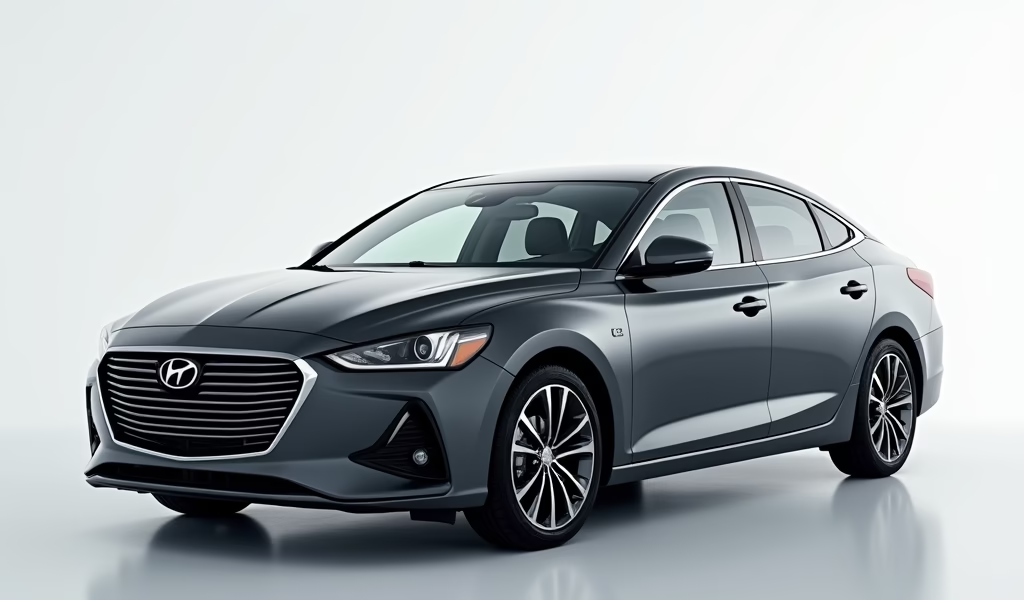Overview
This article provides five essential maintenance tips to protect vehicles purchased with 0% APR financing: regular oil changes, proper tire care, brake system checks, battery maintenance, and fluid monitoring. Following these maintenance guidelines helps owners maximize their interest-free financing benefits by extending vehicle life, preserving warranty coverage, and avoiding costly repairs that could negate the financial advantages of the 0% APR deal.
Table of Contents
- Understanding Zero APR Deals: What’s the Real Deal?
- The Importance of Vehicle Maintenance for Your 0% APR Purchase
- Essential Maintenance Tip #1: Regular Oil Changes – The Lifeblood of Your Engine
- Essential Maintenance Tip #2: Tire Care – Where the Rubber Meets the Road
- Essential Maintenance Tip #3: Brake System Checks – Safety First
- Essential Maintenance Tip #4: Battery Maintenance – Power When You Need It
- Essential Maintenance Tip #5: Fluid Checks – Keeping Everything Running Smoothly
- Creating a Maintenance Schedule That Works
- Conclusion: Protecting Your 0% APR Investment
- Frequently Asked Questions
Understanding Zero APR Deals: What’s the Real Deal?
When you’re in the market for a new vehicle, those flashy “0% APR car deals” can be mighty tempting. And for good reason! According to recent data from Experian, the average new car loan interest rate hovers around 5.7%, meaning a zero-interest offer could save you thousands over the life of your loan. But as a mechanic who’s seen the aftermath of neglected vehicles, I want to help you protect that savvy financial investment with proper care.
Let me break this down in plain English: 0% APR (Annual Percentage Rate) means you’re borrowing money to buy your car without paying any interest. It’s essentially free financing—a rare gem in today’s economy. These deals are typically offered by manufacturers through their financing arms as incentives to move specific models or during promotional periods.
Before you rush to the dealership, though, there’s something crucial to understand. While you might save money on financing, your new vehicle is still a significant investment that requires ongoing care. Just like that free gym membership isn’t worth much if you don’t actually exercise, a 0% APR deal loses its value if your vehicle deteriorates prematurely due to poor maintenance.
The Importance of Vehicle Maintenance for Your 0% APR Purchase
Here’s the honest truth from someone who’s spent decades under the hood: the financial wisdom of your 0% APR deal can evaporate faster than spilled coolant on a hot engine if you neglect regular maintenance. According to a study by CarMD, the average repair cost for check engine light-related issues is now over $400—and that’s just for a single repair.
Many folks I’ve encountered think that a new car with a warranty means they’re off the hook for maintenance. This couldn’t be further from the truth. In fact, most warranties require proof of regular maintenance to remain valid. Miss a few oil changes, and that warranty you’re counting on might not cover a major engine failure.
When shopping for these deals, many buyers focus exclusively on finding the best financing terms, forgetting that total cost of ownership includes maintenance and repairs. A Consumer Reports survey found that drivers spend an average of $1,186 annually on vehicle maintenance and repairs—costs that can be significantly reduced with proper preventive care.
Now, let’s roll up our sleeves and look at the five essential maintenance tips that will keep your 0% APR vehicle running smoothly for years to come, helping you truly maximize the value of that interest-free loan.

Essential Maintenance Tip #1: Regular Oil Changes – The Lifeblood of Your Engine
If there’s one thing I wish every driver understood, it’s the critical importance of regular oil changes. Your engine has hundreds of moving metal parts operating at high temperatures and speeds. Without clean oil, these parts would create friction, generate excessive heat, and eventually weld themselves together—a catastrophic (and expensive) failure.
For most modern vehicles purchased with those attractive 0% APR deals from dealerships, manufacturers recommend oil changes every 5,000 to 10,000 miles. However, this varies based on your driving habits and conditions. If you frequently drive in stop-and-go traffic, extreme temperatures, or dusty conditions, you might need more frequent changes.
Here’s what you need to know about oil changes:
- Synthetic oils typically allow for longer intervals between changes (7,500-10,000 miles)
- Conventional oils generally require changes every 3,000-5,000 miles
- Always follow the manufacturer’s recommendations in your owner’s manual
- Consider your driving habits when determining your oil change schedule
According to research from Edmunds, regular oil changes can extend engine life by tens of thousands of miles. For a vehicle you’re financing at 0% APR, this means you’ll likely have paid off the car long before facing major engine issues—if you maintain proper oil change intervals.
Remember to keep all maintenance records. Not only are these critical for warranty purposes, but they’ll also boost your resale value when it’s time to trade in. A vehicle with documented regular oil changes can command 5-10% higher resale value, according to industry estimates.
Essential Maintenance Tip #2: Tire Care – Where the Rubber Meets the Road
Your tires are literally where all the engineering brilliance of your new car meets the actual road. Yet in my 25+ years as a mechanic, I’ve seen countless drivers ignore their tires until they’re facing a flat or a blowout. Proper tire maintenance not only extends tire life but also improves safety, handling, and fuel economy—helping you maximize the value of your 0% APR purchase.
Did you know that driving with tires underinflated by just 25% can reduce their lifespan by around 25-30%? That’s throwing money away on premature replacements. Even more concerning, the National Highway Traffic Safety Administration (NHTSA) reports that vehicles with underinflated tires are three times more likely to be involved in a crash related to tire issues.
Here’s your tire maintenance checklist:
- Check tire pressure monthly (including the spare) when tires are cold
- Inspect tires regularly for wear, damage, and foreign objects
- Rotate tires every 5,000-8,000 miles to ensure even wear
- Have alignment checked annually or if you notice pulling to one side
- Replace tires when tread depth reaches 4/32″ (winter driving) or 2/32″ (minimum legal requirement)
A simple way to check tread depth is the penny test: insert a penny into the tread with Lincoln’s head upside down. If you can see the top of Lincoln’s head, it’s time for new tires.
Proper tire maintenance can improve fuel economy by up to 3%, according to the U.S. Department of Energy. Over the life of your 0% APR loan, those savings add up significantly. On a vehicle averaging 15,000 miles annually with fuel at $3.50 per gallon, you could save around $150-200 per year just by maintaining proper tire pressure.
Essential Maintenance Tip #3: Brake System Checks – Safety First
When I talk to customers about maintenance priorities, I always emphasize one thing: you can skip the air freshener, but never skimp on brake maintenance. No matter how great your 0% APR deal was, nothing is more valuable than your safety and the safety of others on the road.
Brake systems are sophisticated and have multiple components that wear at different rates. Modern vehicles often have brake pad wear indicators that will make a squealing noise when pads need replacement, but waiting until you hear this warning means you’ve already gone too long.
According to brake manufacturer data, the average brake pad should last between 30,000 and 70,000 miles, but this varies enormously based on driving habits and conditions. City drivers who frequently stop and start might need replacements twice as often as highway commuters.
Here’s what a comprehensive brake maintenance program should include:
- Visual inspection of brake pads, rotors, and calipers during tire rotations
- Brake fluid testing and replacement every 2-3 years (brake fluid absorbs moisture over time)
- Responding promptly to any brake warning lights or changes in brake pedal feel
- Complete brake system inspection at least annually
One often overlooked aspect of brake maintenance is brake fluid changes. Over time, brake fluid absorbs moisture from the air, which lowers its boiling point and can lead to brake fade during heavy braking. Most manufacturers recommend changing brake fluid every 2-3 years, regardless of mileage.
Research from Consumer Reports shows that proactive brake maintenance not only improves safety but can save up to 50% on brake-related repairs over the life of your vehicle. When you’ve secured a great 0% APR deal, the last thing you want is to erode those savings with preventable brake system repairs.

Essential Maintenance Tip #4: Battery Maintenance – Power When You Need It
There’s nothing quite like the sinking feeling of turning your key (or pushing the start button) and hearing… nothing. Battery failures consistently rank among the top reasons for roadside assistance calls, with the American Automobile Association (AAA) responding to more than 7 million battery-related service calls annually.
The good news? Most battery problems are entirely preventable with basic maintenance and awareness. The average car battery lasts 3-5 years, but proper care can push that toward the upper end of the range or beyond, saving you money and inconvenience during your 0% APR loan period.
Here’s how to keep your battery healthy:
- Have the battery tested at every oil change after it reaches 2 years old
- Keep battery terminals clean and free of corrosion (a mixture of baking soda and water works wonders)
- Ensure the battery is securely mounted to minimize vibration
- Be aware that extreme temperatures (both hot and cold) reduce battery life
- If you don’t drive regularly, consider using a battery maintainer/trickle charger
Modern vehicles have increasingly complex electrical systems that put greater demands on batteries. If you’ve loaded up your new 0% APR vehicle with tech features and accessories, your battery works harder than ever before.
A proactive approach to battery maintenance is particularly important if you live in regions with temperature extremes. According to testing by Battery Council International, a battery that would normally last 5 years in moderate climates might last only 2-3 years in very hot or very cold regions.
When it is time to replace your battery, don’t automatically go for the cheapest option. Consider a battery with a longer warranty that matches your expected ownership period for your 0% APR vehicle. This is one area where spending a bit more upfront can deliver better long-term value.
Essential Maintenance Tip #5: Fluid Checks – Keeping Everything Running Smoothly
Your vehicle relies on several different fluids to operate correctly, and monitoring these is like checking the vital signs of your 0% APR investment. As someone who’s diagnosed countless vehicle problems over the years, I can tell you that fluid-related issues are among the most common—and most preventable—problems I see.
Besides engine oil (which we’ve already covered), there are several other critical fluids that need regular attention:
- Transmission fluid: Typically needs checking every 30,000-60,000 miles depending on vehicle type
- Coolant/antifreeze: Should be checked seasonally and flushed every 30,000-50,000 miles
- Power steering fluid: Check during oil changes and top off as needed
- Brake fluid: Should be changed every 2-3 years regardless of mileage
- Windshield washer fluid: Not critical to vehicle operation but essential for safety
Industry data suggests that up to 40% of vehicle engine failures are related to cooling system issues. A simple coolant check and periodic flush could prevent a catastrophic failure that might cost thousands to repair—potentially wiping out all the savings from your 0% APR deal.
Each of these fluids has specific requirements for checking and replacement. Your owner’s manual (that book gathering dust in your glove compartment) contains all the manufacturer-specific intervals for your particular model. When you’ve made a smart financial decision with a 0% APR purchase, following these guidelines is the best way to protect your investment.
If checking fluids yourself seems intimidating, consider scheduling a fluid inspection service with a reputable shop. Many places offer free or low-cost fluid checks that can identify potential issues before they become expensive repairs.
Creating a Maintenance Schedule That Works
With all these maintenance requirements to keep track of, it’s easy to feel overwhelmed. But maintaining your 0% APR vehicle doesn’t have to be complicated. The key is creating a simple, sustainable maintenance schedule that works with your lifestyle.
Start by thoroughly reading your owner’s manual. Manufacturers have specific recommendations tailored to your exact vehicle model. These aren’t just suggestions—they’re engineered guidelines based on extensive testing.
Next, consider creating a digital or physical maintenance log. According to a survey by AutoMD, vehicles with complete maintenance records can command 5-15% higher resale values. That’s significant money when you eventually sell or trade in your vehicle.
For the digitally inclined, numerous apps can help track maintenance schedules. Popular options include CARFAX Car Care, MyCarfax, and aCar. These apps can send you reminders when maintenance is due based on your specific vehicle and driving patterns.
If you’re more old-school, a simple notebook in your glove compartment works just as well. Record the date, mileage, and details of every service—no matter how minor it might seem.
Consider scheduling your regular maintenance in advance. Many service centers allow you to book recurring appointments for the year, ensuring you won’t forget or procrastinate on essential maintenance.
Remember that seasonal changes often call for specific maintenance tasks:
- Spring: Check A/C system, inspect windshield wipers, check for winter damage
- Summer: Check cooling system, verify tire pressure as temperatures rise
- Fall: Check heating system, inspect battery, prepare for colder weather
- Winter: Check antifreeze levels, inspect tires, verify all lights are functioning
By creating and following a maintenance schedule, you’ll not only protect your 0% APR investment but also enjoy a more reliable, efficient, and valuable vehicle throughout your ownership experience.
Conclusion: Protecting Your 0% APR Investment
Securing a 0% APR car deal is just the beginning of your journey to smart vehicle ownership. The real value comes from maintaining that vehicle properly throughout your loan term and beyond. As we’ve explored in this guide, regular maintenance isn’t just about avoiding breakdowns—it’s about protecting your financial investment.
The five essential maintenance areas we’ve covered—oil changes, tire care, brake system checks, battery maintenance, and fluid monitoring—form the foundation of a comprehensive vehicle care program. By giving attention to these critical systems, you’ll maximize the benefits of your interest-free financing while minimizing unexpected repair costs.
Remember that the average driver spends over $1,000 annually on vehicle maintenance and repairs. With proactive care, you can reduce these costs significantly while extending your vehicle’s useful life far beyond your loan term.
Think of maintenance as an investment, not an expense. Every dollar spent on preventive maintenance typically saves $3-5 in future repairs, according to automotive industry research. That’s a return on investment that even the best financial advisors would envy.
Schedule a complimentary vehicle health check with Knows Your Car to ensure your 0% APR investment stays in top condition. Visit our website or call us today to book your appointment.
Frequently Asked Questions
What’s the catch with 0% APR car deals?
0% APR deals often require excellent credit scores (usually 700+) and may come with shorter loan terms or exclude rebates and incentives. Always read the fine print and calculate the total cost before signing.
Do I really need to follow the maintenance schedule for a new car?
Yes, absolutely. Following the manufacturer’s maintenance schedule is crucial for preserving your warranty coverage and preventing costly repairs. Most warranties require proof of regular maintenance.
How much can I save with a 0% APR deal compared to standard financing?
On a $30,000 vehicle with a 5-year loan, a 0% APR deal saves approximately $4,000-$5,000 compared to a standard 5.7% interest rate. Exact savings depend on loan amount, term, and current market rates.
Will skipping maintenance void my new car warranty?
Yes, neglecting required maintenance can void portions of your warranty coverage. Manufacturers can deny warranty claims if they determine that lack of maintenance contributed to the failure.
Are extended warranties worth it with a 0% APR purchase?
Extended warranties merit consideration based on your long-term ownership plans and the vehicle’s reliability record. If keeping the vehicle beyond the factory warranty period, research reliability data before deciding.

